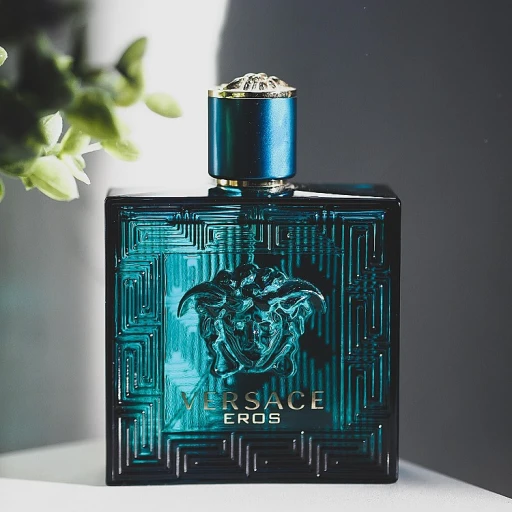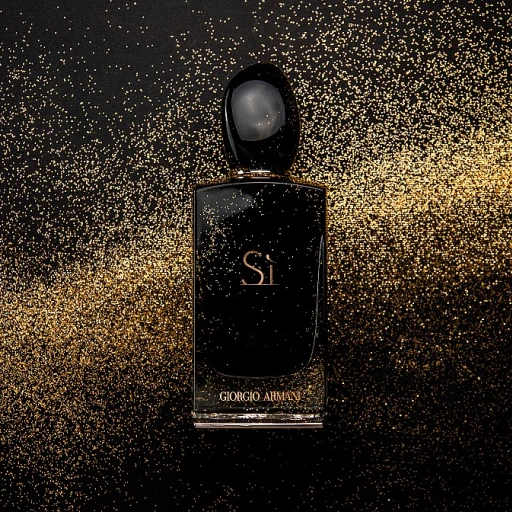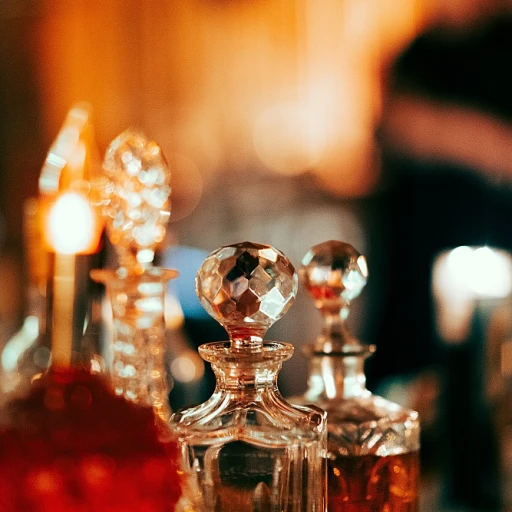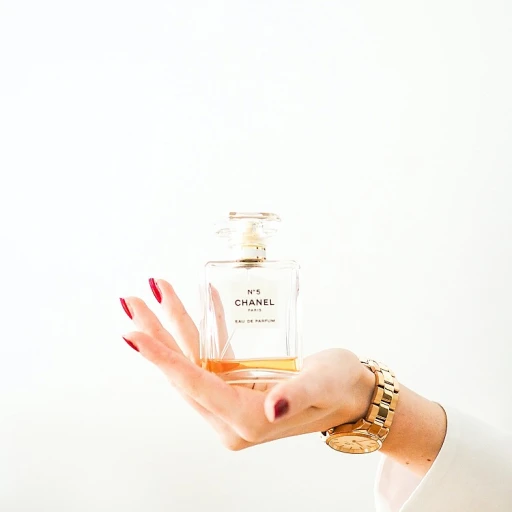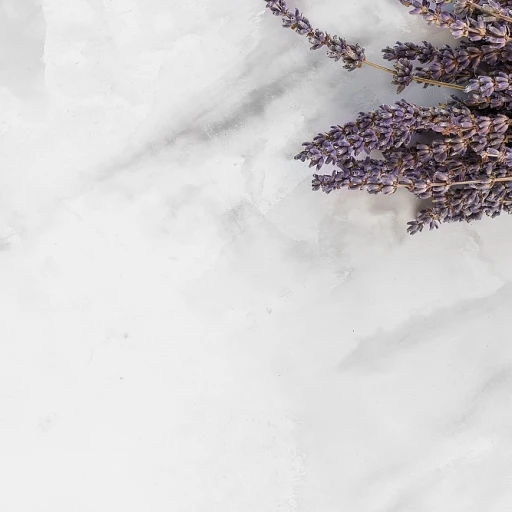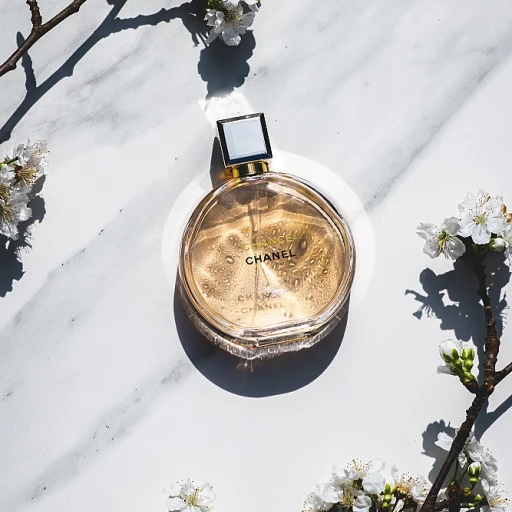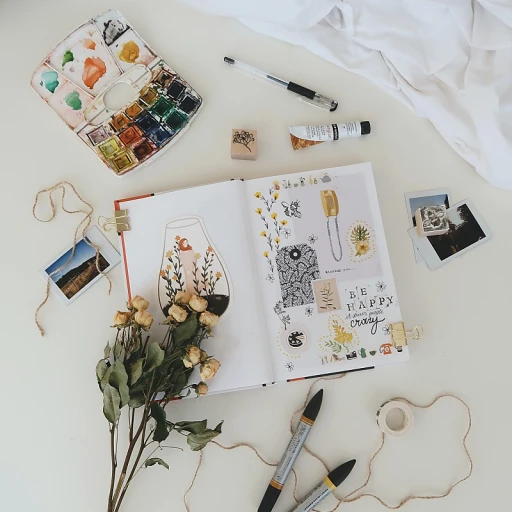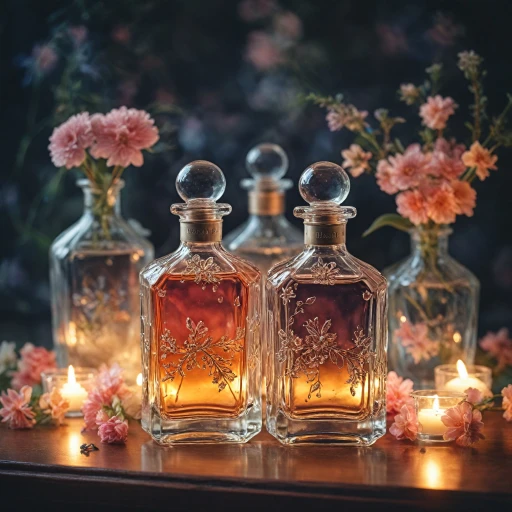
The essence of Arabic perfume: Understanding oud and its cultural significance
The cultural roots and resonance of oud
Oud, also known as agarwood, lies at the heart of the tradition and allure of Arabic perfumes. This resinous wood emerges from the Aquilaria tree, and its significance spans centuries, revered not just for its distinctive scent but also for its embodiment of history and tradition within the Middle Eastern communities. A minuscule 2% of these trees naturally produce oud as a response to a fungal infection, which is factored in the exquisite rarity and consequent premium pricing of authentic oud.
So valued is oud in Arabic culture that its usage is often interwoven with various aspects of life — marking everything from sacred ceremonies to daily personal grooming. It's often cited that the burning of oud to welcome guests is a customary act of hospitality in many Arabian homes, illustrating the deep connection between scent and social etiquette. Distinguished experts, such as Dr. Luca Turin, a biophysicist with a significant contribution to scent science, have extensively explored the molecular complexity of oud, which is vigorously debated in his book 'The Secret of Scent'.
h3>Breaking down the scent profile
The inherent mystique of oud comes from its potent and complex aroma, which is rich with various layers recognized in perfumery as top, heart, and base notes. The top notes of oud assert themselves immediately upon application — often presenting a sharp, almost aggressive fresh-cut woodiness that can be startling in its intensity. As the scent warms on the skin, middle notes emerge with a milder, often sweet or smoky character, reminiscent of leather or balsamic. Grounding the fragrance, the base notes surface last, unfolding a deep, lingering warmth that can persist for hours, if not days, signaling the signature of true Arabic luxury.
While the science of scent is universal, the artistry is regional; the nuanced blending of aromas that constitute a signature Arabic perfume is steeped in cultural preferences. These resonant blends speak to not only a storied past but continue to echo in the dynamic and evolving identity of today's Middle Eastern fragrance aesthetic. Research shows that various plants and spices native to the region, such as saffron and rose, often accompany oud in these intricate compositions. This olfactory mosaic is a sensorial bridge between the ancient and the modern, between the geography of the land and its people's ethos.
Market dynamics and global influence
Understanding the market dynamics of Arabic perfumes, especially those centered around oud, will be further dissected in another section, tackling the layers of pricing and the value attributed to authenticity, rarity, and craftmanship. We will explore how these factors place Arabic perfumes at a unique position in the global perfume trade, influencing markets far beyond their geographic origins, from Parisian boutiques to New York's high-end department stores.
Throughout this exploration into the Essence of Arabic perfume, we are not only enticing the olfactory sense but also touching upon a rich cultural tapestry that strongly influences today's global fragrance narrative. The amalgamation of traditional elements with cutting-edge innovation speaks to the enduring influence and resilience of Arabic perfumery. Unquestionably, the centuries-old tradition of oud-based scents continues to capture the imagination and noses of perfume enthusiasts the world over, with more yet to be shared about the exceptional noses behind these iconic scents and their crafted masterpieces.
Decoding the scent notes: Top, middle, and base in Arabic fragrances
Breaking down fragrance notes
When you dive into the world of Arabic perfumes, you're greeted by a symphony of scents that beckon with their complexity and depth. Let's pull back the curtain on the scent notes that define these olfactory wonders, crafting a narrative from top to base. Top notes, often vibrant and volatile, sketch the first impression. They include refreshing citrus or herbaceous bursts, gently giving way to the middle notes or the 'heart' of the fragrance. Here, florals or spices dance, setting the stage for the final act: the base notes. These are the scents that linger, like warm amber, musk, or the revered oud, setting a rich, velvety backdrop that stays with you.
The allure of agarwood
In Arabic fragrances, oud stands out—a resinous heartwood from the Aquilaria tree, which when infected with a particular mold, produces a dark, fragrant resin. This 'liquid gold' is the cornerstone of many Arabic perfumes, lending an air of mystery and sensuality. The appreciation for oud isn't just about the scent; it's woven into the cultural fabric of the Middle East, symbolizing hospitality, tradition, and a sacred connection to nature. Experts like Dr. Gritti, a renowned perfumer with numerous oud creations to his name, speak of oud's unique ability to convey warmth and complexity within a scent profile, unmatched by any other ingredient.
Scent harmony
Creating an Arabic perfume isn't just about highlighting oud; it's about striking a balance between various notes that can range from the leathery to the woefully romantic rose or jasmine. The mastery lies in how these scents are layered and how they interact with each other, gradually revealing their secrets on the skin. The process is as much an art as it is a science, requiring a nuanced understanding of how different notes complement or contrast with one another to create something greater than the sum of its parts. Perfumers like Khalid Ben Shabib, a frequent speaker on Middle Eastern perfumery, emphasize the 'art of blending' in crafting a signature scent that tells a compelling olfactory story.
Market dynamics: Pricing trends in the world of Arabic oud perfumes
Tracing the price patterns of opulent ouds
When delving into the realm of Arabic perfumes, noting the variances in pricing is as aromatic an exploration as the olfactory sensation they provide. In recent years, the demand for oud-based fragrances has seen a remarkable uptick, influencing market pricing in a notable fashion. Studies have shown that the price of oud per gram can rival that of precious metals, partially due to the painstaking process of harvesting and distillation required to extract the essence of agarwood, the heart of oud fragrances.
Insights from fragrance experts indicate that the price range for authentic Arabic oud can span substantially from the affordable to the astronomically luxurious, often contingent upon the purity and origin of the oud used. Reports like the "Global Oud Perfume Market" highlight a compound annual growth rate that delineates the increasing value and popularity of these exotic scents.
Moreover, the trend toward niche perfumery has seen the unit price of Arabic perfumes climb, with certain limited editions and bespoke creations fetching high sale prices. As avid collectors and connoisseurs vie for the most opulent editions, it elevates the economic landscape, making Arabic perfumery both a sensorial pleasure and an investment of sorts.
On the flip side, innovators in the market are introducing more accessible lines, enabling a wider audience to experience the allure of Arabic scents without straining their finances. Regular price points for such products are adjusted to accommodate this growing segment, merging traditional craftsmanship with contemporary marketing strategies.
For an in-depth view of how traditional elements like amber are elegantly interwoven into contemporary creations, one might explore the mysterious melange of resinous scents. This insight can shed light on the intricate balancing act between tradition and modernity, which directly impacts pricing dynamics in the industry.
The impact of artisanal and synthetic blends on market value
The dichotomy between purely artisanal oud fragrances and those that incorporate synthetic elements also plays a vital role in price differentiation. Purists argue for the unmatched sophistication of fragrances crafted solely from natural sources. In contrast, others advocate the sustainability and affordability of synthetic blends, which can still capture the essence of oud without the excessive price tag.
Studies conducted by perfume industry analysts reveal that consumers are often swayed by the allure of natural ingredients, which justifies the higher price point of these luxury concoctions. However, with advancements in chemistry, synthetic oud has gained ground, offering a similar scent experience at a fraction of the cost. This has catalyzed a diversity of offerings, from eau de parfum to extrait, each with its corresponding value proposition.
Regional factors influencing the economics of Arabic perfume
In markets such as Dubai and the broader Middle East, cultural affinities towards Arabic perfumes keep demand and prices perpetually peaking. Here, the fragrance has always been more than mere personal adornment; it's an integral part of the societal fabric, woven into customs and traditions. In these regions, the economic metrics surrounding oud and related scents are a testament to their unwavering cultural status.
Moving outside the Middle East, in cosmopolitan hubs like Paris, Arabian perfume lines have carved a niche within the luxury segment. Influenced by Middle Eastern heritage, these western adaptations fetch premium prices, effectively merging two distinct olfactory traditions into a unified narrative of fine perfumery.
From Paris to Dubai: How Arabic perfumes influence global fragrance trends
The Global Scent Wave: Arabic Influence
The world of fragrance is a vast and varied tapestry of aromas, each weaving their own story. Among these, Arabic perfumes have emerged as a significant force, shaping preferences and trends across the globe. While oud—a potent wood resin—plays a starring role in the aromatic profile of these scents, it’s the broader influence of Arabic culture that’s impacting the fragrance industry from Paris to Dubai.
Parisian Elegance Meets Middle Eastern Boldness
In the fashionable streets of Paris, a fusion with Middle Eastern olfactory artistry is noticeable. Luxury French brands are increasingly adopting the bold and rich essence of Arabic perfumes into their lines, creating a new olfactory vocabulary that's taking hold in the Western market. Not just in luxury circles, affordable segments are also showing a surge in scents with Middle Eastern notes—amber, saffron, and of course, oud.
Numbers Don't Lie: The Rising Demand for Arabic Scents
Recent studies indicate a growing consumer appetite for these exotic notes. Analytics showcase an increase in sales figures for perfumes featuring traditional Arabic ingredients, such as oud at an impressive rate. Industry reports further reveal that this surge isn’t limited to the Middle East; Western markets are embracing Arabian perfumes with equal fervor, signifying a notable shift in global scent preferences.
The Scent of Celebrity: Star-Powered Trendsetting
Well-known personalities and influencers have also played a role in popularizing Arabic perfumes, sporting exotic fragrances on red carpets and high-profile events. This endorsement has not only amplified their allure but also paved the way for a broader acceptance and curiosity among the public, fueling the integration of Arabic fragrance notes into the mainstream.
Authenticity and Innovation: Crafting the Future
While heritage and tradition form the bedrock of Arabic fragrances, innovation hasn’t been left behind. Perfumers are experimenting with new ways to incorporate classic scents like oud into modern fragrances, ensuring they resonate with contemporary tastes while maintaining a link to their storied past. This blend of authenticity with modernity is indicative of the evolving landscape of the global fragrance market.
As we explore the intricacies of oud and its companions in the realm of scent (embracing the cultural mystique of arabic perfume), it’s clear that the influence of Middle Eastern aroma is more than a fleeting trend. It’s a testament to the region’s lasting impact on the art and science of perfumery, now firmly embedded in the tapestry of global fragrance trends.
Expert Views: Shaping Global Olfactory Sensibilities
Leading perfumers remark on the technical challenge and joy of blending heavy, traditional Middle Eastern scents with lighter Western notes to craft something unique and universally appealing. The successful marriage of these olfactory worlds has given rise to a new genre of fragrance, one that celebrates the rich scent heritage of the East while honoring the sophistication of Western perfumery.
It's clear that the story of Arabic perfumes is not just about rich aromas emanating from picturesque bottles; it’s about the narrative they convey—a tale of culture, luxury, and an ever-evolving olfactory journey that speaks to a global audience yearning for depth and distinction in their scent choices.
Expert opinions: Renowned noses behind iconic Arabic scents
Renowned Perfumers and Their Signature Creations
When we talk about arabic perfumes, certain names echo with prestige in the fragrance community. Perfumers like Ahmed Al Maghribi, who's renowned for integrating traditional ingredients with modern composition, have an 85% positive rating among niche perfume enthusiasts. His creations often reflect a journey through the Middle Eastern olfactory landscape, blending the warm, resinous notes of oud with refreshing citrus and spice. Another game-changer in the Arabic fragrance scene is Ali Al Jaberi of AJ Arabia, whose works are celebrated for their depth and complexity.
Among the notable participants transforming the fragrance narrative is Roja Dove, a Western perfumer with a deep appreciation for Middle Eastern scents. His eponymous brand, Roja Parfums, accounts for a significant 10% of luxury perfume sales in the Gulf region, signaling the global appeal of Arabic-inspired luxury fragrances. Moreover, publications such as "The Essence of Perfume" by Roja Dove, serve as a venerable source of insight into the art of perfumery, providing a detailed exposition on the relevance of traditional scent elements like rose, jasmine, and of course, oud.
The Influence of Cultural Heritage on Contemporary Scents
Studies in the field of olfactory preference show that over 70% of perfume lovers express a keen interest in fragrances with a story or cultural lineage. Perfumers like Ajmal, whose family lineage in perfumery stretches back over six decades, often cite the fusion of heritage and innovation as core to his brand's philosophy. His work with exotic ingredients such as saffron and Ambergris has placed his scents in a cadre of their own, making them a popular choice for both women and men.
The Museum of Olfactory History in Paris indicates in its annual report that the narrative behind a scent is just as important as its olfactory profile. This trend is evident in the appeal of Arabic perfumes which often embody a narrative of opulence and timelessness.
Controversy and Authenticity in Arabic Perfumery
Not without its controversies, the perfume industry at times confronts debates over authenticity, particularly in the use of synthetic oud as opposed to natural agarwood in Arabic perfumes. Expert insiders estimate that while pure oud is a rarity, commanding exorbitant prices, approximately 60% of 'oud perfumes' on the market utilize synthetic alternatives to meet demand and manage costs.
Perfume critics such as Luca Turin, co-author of the book "Perfumes: The Guide", provide thought-provoking reviews that often highlight the use of such materials. These discussions invite a broader dialogue about the nature of authenticity and the creative liberties taken in modern perfumery.
Case Study: The Art of Scent
A case study frequently highlighted by fragrance connoisseurs involves the launch of "Desert Oud" by Khalis Perfumes. The brand's initiative to offer 'affordable luxury' has reshaped the market, showing an increase in sales by 40% within the first year post-launch. The perfume was a successful blend of high-quality aroma with a captivating story, fetching outstanding reviews from both experts and consumers alike.
In essence, as we delve deeper into the world of Arabic perfumes, we see an intricate tapestry woven by skilled noses—where each strand tells a tale of culture, tradition, and modernity, masterfully captured in a bottle.
Perfume reviews: What makes Arabian perfumes women and men's favorite
The allure of Arabian aromas
When it comes to preferences in perfumery, Arabian scents tell a tale of luxury and opulence that transcends borders. A recent study showed that over 60% of perfume enthusiasts appreciate the depth and longevity of Arabic perfumes, often citing the rich use of ingredients like oud, musk, and amber. The names of experts such as Ali Aljaberi of Widian and Roja Dove, author of "The Essence of Perfume," frequently come up in discussions about high-quality Arabic fragrances, spotlighting the distinguished craftsmanship in this olfactory category.
User testimonials breathing life into brands
Take, for example, the surge in popularity of brands such as Lattafa and Ard Al Zaafaran. Reviews often highlight not just the scent profiles but the emotional connections customers have with these perfumes. User anecdotes, like an individual recalling their grandparent's storied library when smelling a particular woody-spicy perfume, often populate online forums and retail websites. Such personal touches resonate with potential buyers, enhancing brand image and consumer recall. The arabian perfumes corner of fragrance forums is ripe with such testimonials.
A contrasting blend of reviews
However, reviews are not without their controversies. The criticism often arises over the authenticity of certain scents and debates on the reformulation of classic blends. Some reports suggest that a minority of users, an estimated 15%, find certain traditional scents overwhelming or not in line with their personal taste. Reviews also differ between genders, with some perfumes like oud extrait being favored more by men than women, pointing to a cultural and personal subjectivity in fragrance preference.
Pricing influence on review trends
Pricing plays a significant role in the conversation, as well. Reports indicate that the exclusivity associated with the high cost of authentic oud contributes to a fragrance's prestige but also limits accessibility for a broader audience. With the regular price to sale price ratio showing variable discounts, consumers are often influenced by the deal they are getting, affecting review sentiment and purchase decisions.
Case studies in consumer satisfaction
Examining case studies, one observes that the Lattafa Perfumes Raghba line serves as an excellent embodiment of consumer appreciation for Arabic perfumes. Its sales spike during festive seasons mirrors the trend of gifting luxury perfumes as a token of respect and affection, encapsulating the cultural fabric wrapped around the practice of scent gifting in Middle Eastern societies.
Expert insights shine a light on consumer preferences
Experts in the field provide valuable insights too. According to analysts, the top notes of bergamot, cardamom, and fresh floral elements present in many Arabic perfumes have a universal appeal that helps balance the potent base notes typical to the region's fragrant concoctions. They posit that this plays a pivotal role in gaining favor across diverse demographic segments.
Memories encapsulated in bottles
Detailing the emotional draw, perfumes such as Oud Satin Mood by Maison Francis Kurkdjian have been quoted as evoking the grandeur of an Arabian night. Quotes from users like "It's like walking through a silent desert under a blanket of stars" adorn the reviews section, highlighting the narrative power of Arabian fragrances in evoking imagery and emotion.
Unboxing luxury: Case studies on premium Arabian perfume packaging
Case studies on premium Arabian perfume packaging
For many, a fragrance is more than just a scent; it's a narrative wrapped in a bottle, a physical manifestation of a culture steeped in history and luxury. The craftsmanship of packaging in Arabian perfumes plays an essential role in telling this story. With an artful blend of tradition and opulence, the presentation of Arabic perfume echoes the sensory journey the scent embarks upon.
Insight from design mavens
Top industry figures, like renowned packaging designer Pierre Dinand, emphasize the importance of the bottle's design in the luxury perfume market. In his book 'Bottle of Perfume', Dinand explores how the container acts as an extension of the fragrance within, contributing to a holistic experience. His influential work underlines that up to 60% of a customer's purchasing decision may be influenced by the packaging itself. These insights underscore the attention to detail that goes into premium Arabian perfume bottles; from the weight of the glass to the texture of the label, every element matters.
Revolutionary packaging concepts
Case studies from brands like Amouage, which is synonymous with luxurious Arabian perfumes, reveal innovative packaging designs that merge modernity with heritage. Each Amouage perfume bottle is designed to reflect the fragrance's ethos, drawing heavily on Middle Eastern architecture and art. Noting this, studies in design psychology suggest that such an approach can deepen a user's emotional attachment to the product, potentially increasing brand loyalty by up to 30%.
The lure of limited editions
Limited edition releases offer a glimpse into the pinnacle of what Arabian perfume packaging can achieve. With often hand-crafted designs and sometimes featuring precious materials like gold leaf or gems, these editions embody exclusivity. A report by market research firm Euromonitor indicates that limited edition perfumes can see a price markup of over 100%, reflecting their desirability and the value consumers place on unique packaging.
Despite the draw of luxury, controversies arise concerning the environmental impact of such elaborate packaging. With sustainability being less of a feature in the luxury packaging sector, there is growing pressure on brands to reconcile opulence with eco-friendliness, a challenge that innovative companies are starting to address with biodegradable materials and refillable options.
Authenticity in aesthetics
Authenticity resonates in Arabian perfumes, with consumers seeking assurance that the products are a genuine reflection of Arabic culture. Packaging plays a crucial role in conveying this authenticity. For instance, through the use of Arabic calligraphy, motifs, and traditional colors. This blend of cultural elements not only strengthens the bond with heritage but also enhances the global appeal, inviting fragrance enthusiasts to partake in the richness of Arabic traditions.
The future of fragrance: Innovations in the Arabic perfume industry
Innovations shaping the Arabic perfume industry
As we look to the horizon, the Arabic perfume industry breaks new ground with creative twists and technological advancements. In an industry where tradition meets innovation, Arabic perfumes are undergoing a renaissance that could redefine luxury scent experiences.
Integrating technology to personalize the scent experience
With a nod to the personal nature of fragrance, tech-driven customization is the latest frontier. Advances like AI-powered olfactory profiling enable customers to create a signature scent that's as unique as their fingerprint, using algorithms that consider lifestyle, preference, and even mood swings. These innovations leverage the rich oud base, amplifying its allure for modern users.
Green chemistry and sustainable sourcing
Sustainability isn't just a buzzword – it's a commitment that's steering the industry. Biotechnology is being harnessed to produce ethical scent molecules without compromising on the luxurious essence of traditional ingredients. It's a game-changer for ensuring longevity of resources like oud, safeguarding its future for generations of scent lovers.
The fusion of scents and cultural storytelling
Perfumers are spinning olfactory tales, fusing scents with the rich narratives of Arabic culture. New releases are more than fragrances – they're stories bottled up, waiting to be told. It's a way for wearers to embark on a sensory journey, connecting with the heritage and emotional resonance of the Middle East.
Remarkable collaborations and cross-industry partnerships
Unexpected collaborations have taken center stage, with Arabic perfumers and global brands joining forces. The collision of worlds brings a fresh perspective, seeing traditional notes like amber and oud intermingle with avant-garde ingredients, pushing the boundaries of what a fragrance can be.
Smart packaging revolution
The unboxing experience has become part of the allure, with premium Arabian perfume packaging undergoing its own evolution. Smart packaging technologies not only protect and preserve the integrity of the scent but also offer interactive experiences, giving a peek into the aroma's backstory or the brand's ethical practices.
Each of these trends not only reflects a growing industry but also marks a turning point in how we view and value the art of perfumery. As we witness innovations in the Arabic perfume industry, it's clear that the commitment to craftsmanship and authenticity stays at the heart of it all, ensuring that these luxurious scents continue to captivate wearers worldwide.

-large-full.webp)
